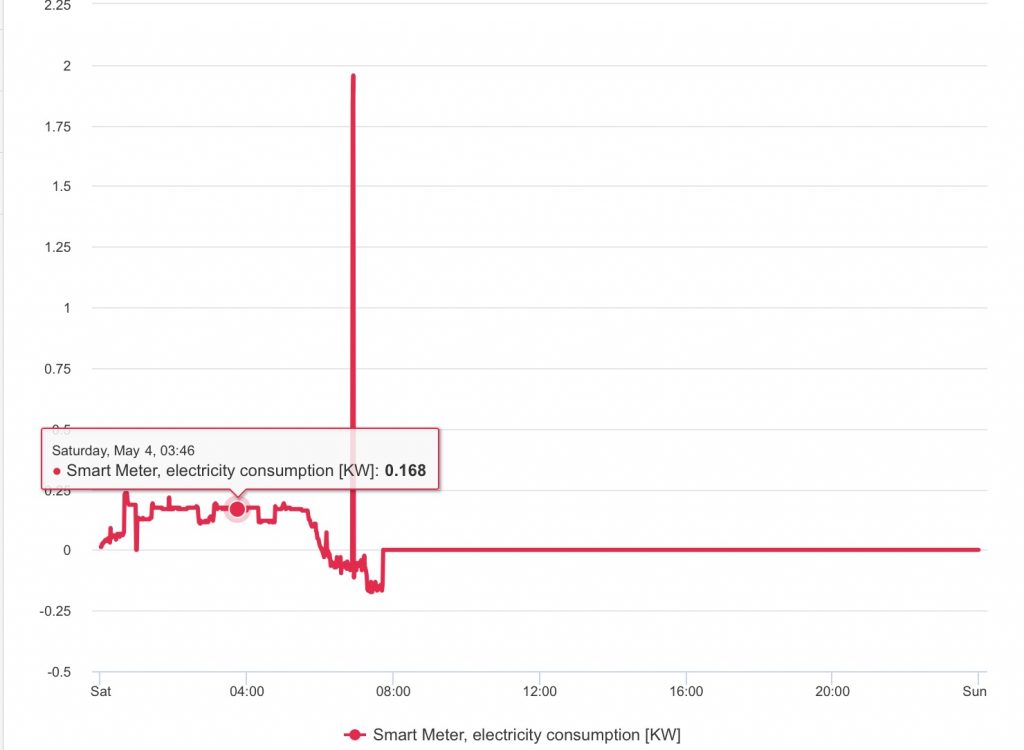As regular readers will know, I shift my major loads (including battery, car and water heating) around to exploit the cheapest periods on my tariff. Yesterday I had a conversation with someone who was very keen to do the same with a fridge. I’ve never considered doing this a fridge on two grounds:
- Is it safe to mess with a fridge or freezer if that risks compromising the temperature and thus the safe storage of food?
- Is there enough saving to be worth even considering this?
Although I don’t explicitly measure the power consumption of the fridge, we can make some assumptions from data that I do have.
According to the US Department of Health, a fridge can be safely left for 4 hours during a power cut, but you should avoid opening the door. That period at least corresponds to the duration of the early peak (and thus potentially the highest cost power), but I still don’t think that this would be worth the effort.

The above illustration shows my home drawing 168 Watts overnight. That load is all the standby loads in the house (TV, DVD, oven, microwave etc), assorted phone and iPad chargers, cordless phone power, WiFi router, alarm clock, central heating controls, smart plugs and the fridge-freezer.

For a couple of periods overnight the consumption dips to around 114 Watts, a difference of 54 Watts. I can think of nothing on my list of loads that might cycle on/off except the fridge-freezer so potentially that’s the near-continuous 54 Watt load. It’s conceivable of course that the fridge-freezer load cycling between two levels, but the lower level cannot be more than 114 Watts. 114 Watts is 4 p/hour at my highest electricity cost of 35 p/kWh or 1 p/kWh at my average rate of 9 p/kWh. This doesn’t seem a worthwhile saving to me.
